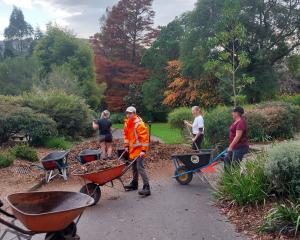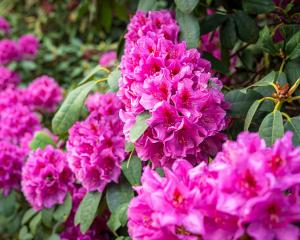Cistus hail from the Mediterranean region, and all do well in the Dunedin area. They are smothered in a succession of short-lived white, yellow or pink flowers.
Most do not like being pruned any more than the removal of spent flowers, and will not regrow from old wood.
Shrubs can be short-lived, lasting only a few years, but are easily propagated by softwood cuttings taken from new shoots in summer.
Most species will self-seed. One species that is very striking is Cistus ladanifer.
The large, 10cm flowers unfurl from a small bud leaving the petals fashionably crumpled, and it is as if someone has blotted each stark white petal after dipping their finger in a pot of maroon paint.
Making them even more eye-catching is the central cluster of bright yellow stamens.
This shrub has an upright habit and narrow bright green leaves which, along with the young stems, are covered in a sticky fragrant resin called ladanum or labdanum.
This is harvested and extracted commercially in Spain for use in the perfume industry.
Unlike most cistus, C. ladanifer will bush up if cut back to young shoots.
The common name for Cistus ladanifer is gum cistus, or in Spanish, jara pringosa, sticky shrub.
Labdanum was historically gathered by having goats graze among the cistus, then removing their beards to harvest the sticky gum.
Cistus are hardy, drought-tolerant and withstand sea breezes. They do not like root disturbance and will not transplant well.
Rock rose also refers to other members of the Cistaceae family Halimium, Helianthemum and Tuberaria.
Many rock roses are flowering at present on the rock garden at Dunedin Botanic Garden.
Robyn Freeth is the rock, alpine and water collection curator at the Dunedin Botanic Garden.












